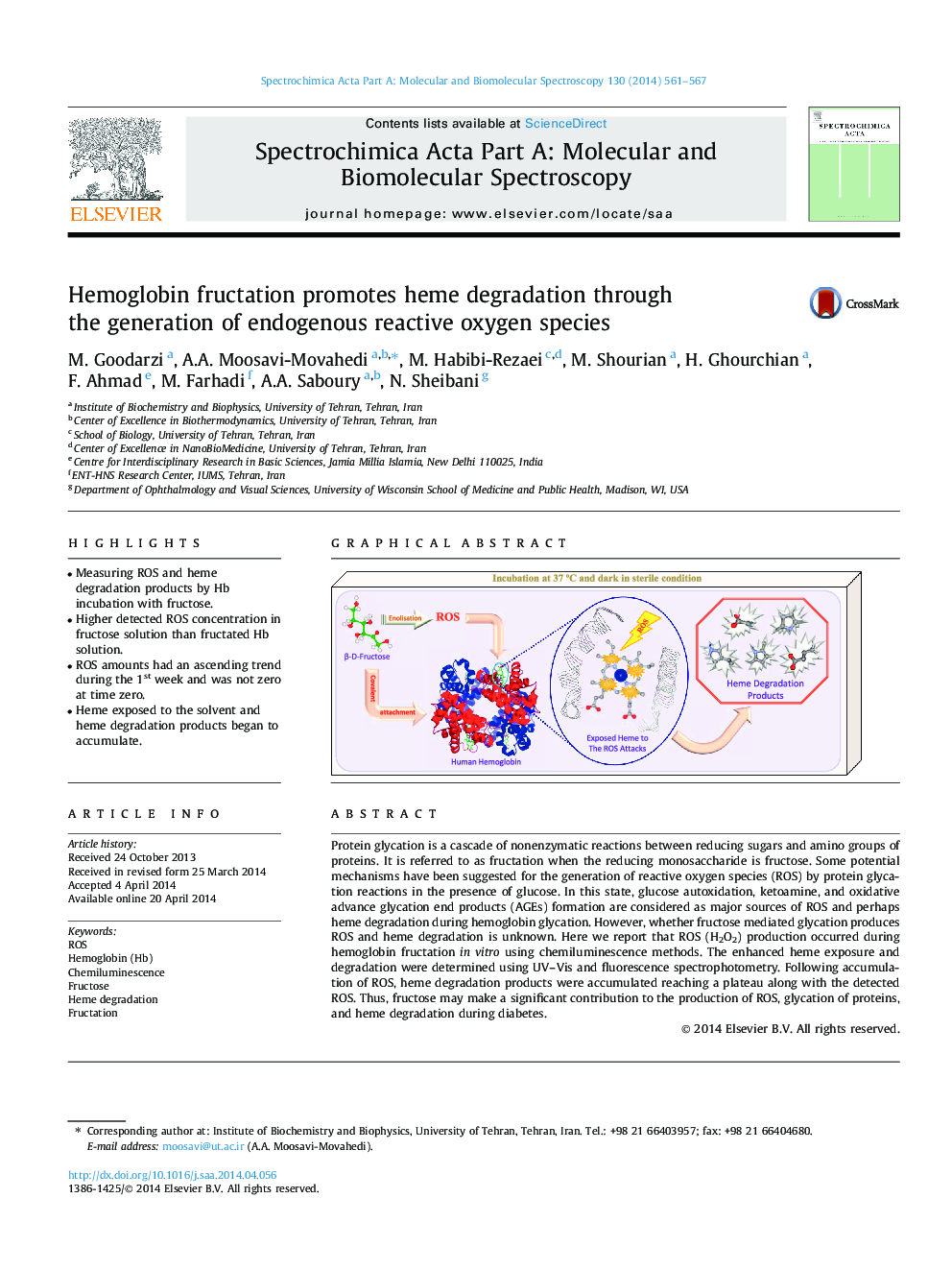| کد مقاله | کد نشریه | سال انتشار | مقاله انگلیسی | نسخه تمام متن |
|---|---|---|---|---|
| 1230388 | 1495238 | 2014 | 7 صفحه PDF | دانلود رایگان |
• Measuring ROS and heme degradation products by Hb incubation with fructose.
• Higher detected ROS concentration in fructose solution than fructated Hb solution.
• ROS amounts had an ascending trend during the 1st week and was not zero at time zero.
• Heme exposed to the solvent and heme degradation products began to accumulate.
Protein glycation is a cascade of nonenzymatic reactions between reducing sugars and amino groups of proteins. It is referred to as fructation when the reducing monosaccharide is fructose. Some potential mechanisms have been suggested for the generation of reactive oxygen species (ROS) by protein glycation reactions in the presence of glucose. In this state, glucose autoxidation, ketoamine, and oxidative advance glycation end products (AGEs) formation are considered as major sources of ROS and perhaps heme degradation during hemoglobin glycation. However, whether fructose mediated glycation produces ROS and heme degradation is unknown. Here we report that ROS (H2O2) production occurred during hemoglobin fructation in vitro using chemiluminescence methods. The enhanced heme exposure and degradation were determined using UV–Vis and fluorescence spectrophotometry. Following accumulation of ROS, heme degradation products were accumulated reaching a plateau along with the detected ROS. Thus, fructose may make a significant contribution to the production of ROS, glycation of proteins, and heme degradation during diabetes.
Figure optionsDownload as PowerPoint slide
Journal: Spectrochimica Acta Part A: Molecular and Biomolecular Spectroscopy - Volume 130, 15 September 2014, Pages 561–567
